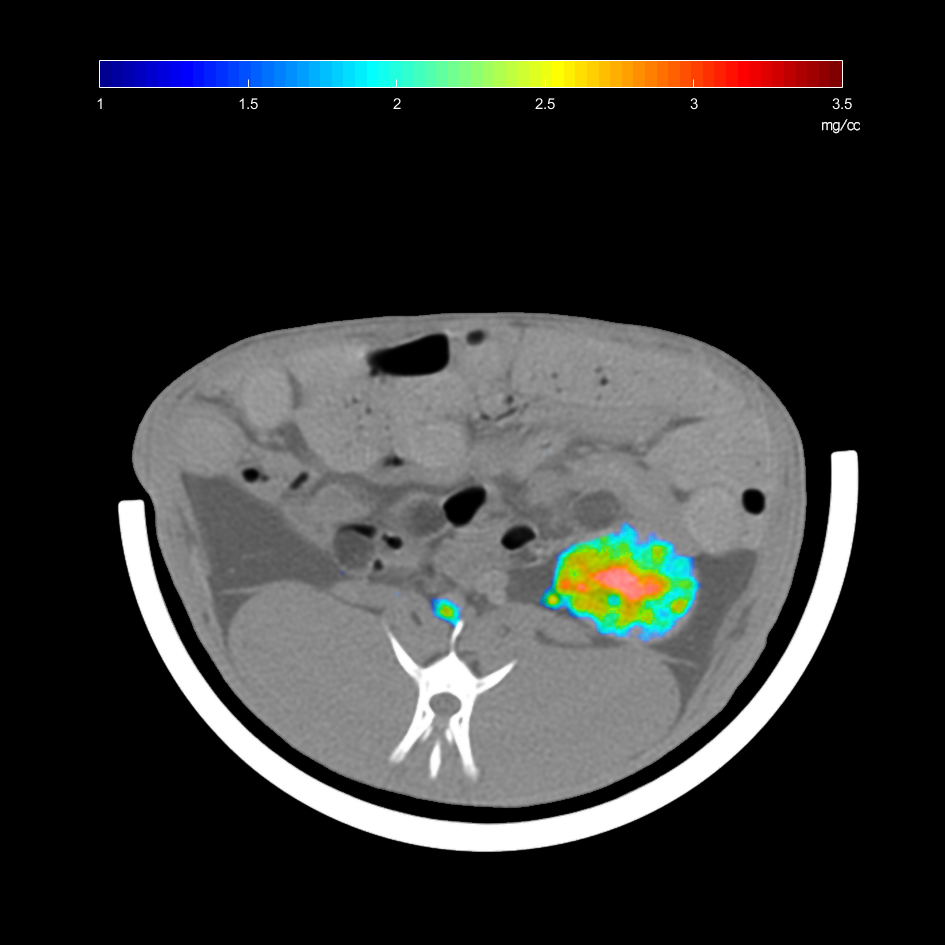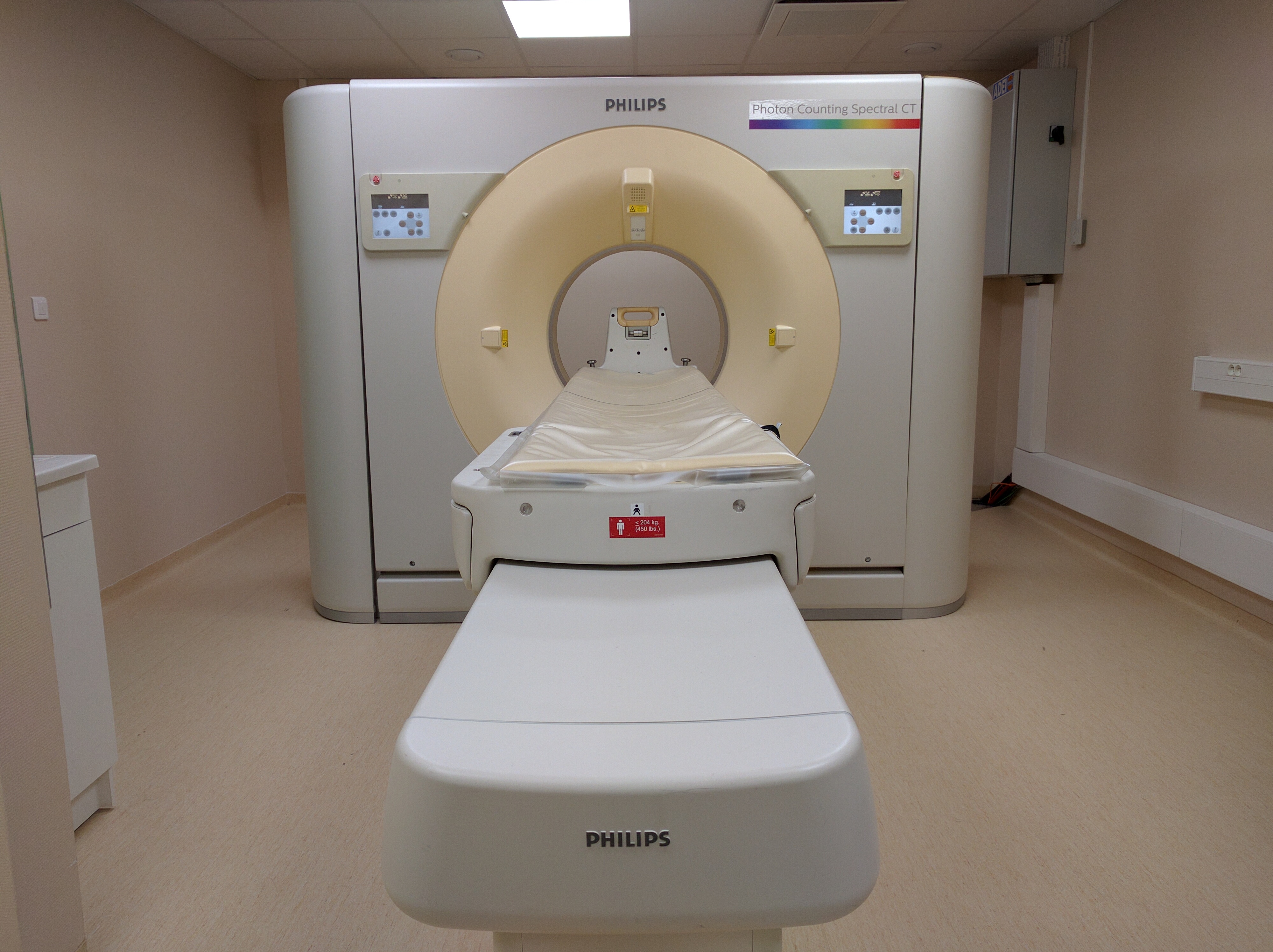Spectral Photon Counting CT, CERMEP, Lyon
Spectral Photon Counting CT European Project: SPCCT, a project that heralds a new generation of scanners enabling early diagnosis in oncology and cardiology.
Spectral Photon Counting CT is a new and promising imaging modality based on a new energy resolving detector technology. A 4 year collaborative European Project led by the Université Claude Bernard Lyon 1 was selected and granted (6.4 M€) under the “Horizon 2020” European Research and Innovation program. The SPCCT project using a unique Philips prototype involves 11 European partners and will last 48 months from January 2016 to December 2019.
Lyon, France, March 8, 2016 – Université Claude Bernard Lyon 1 announces today the launch of the SPCCT project, a H2020 funded collaborative project aiming to develop a new generation of spectral CT scanners using photon counting technology. Computed Tomography is the most widely used imaging method in the world and has transformed patient care. Spectral Photon Counting CT is a new imaging modality based on the usual CT concept with the key difference of energy resolving detector technology. The additional spectral information can be used for material separation and can deliver additional, new contrast with clinically relevant new information. The most important novel capability of Spectral CT is K-Edge imaging for selective and quantitative detection of specific elements including among others iodine, gold, bismuth, gadolinium or ytterbium. The full potential of Spectral CT can be exploited in combination with targeted contrast materials carrying a payload with a compatible K-edge.
A world first which puts Lyon and the Rhône-Alpes region at the forefront of the scientific and medical world.
“The University Claude Bernard is thrilled to lead this project and share its research advances in medical imaging. I’m proud to collaborate with such partners, from academics to global corporation and start-up, in a joint objective to offer patients better health care.” Says PR DOUEK chief of Medical Imaging Department of the Lyon University Hospital (Hospices Civils de Lyon).

SPCCT-fused-image-of-k-edge-gadolinium-and-standard-CT-axial-slice-of-a-rabit-abdomen-at-the-CERMEP.-Greater-amounts-of-gadolinium-contrast-are-shown-in-brighter-colors
Due to its high potential and the high medical unmet needs, a 4-year European Project led by the Université Claude Bernard Lyon 1, was funded under the “Horizon 2020” European Research and Innovation program (6.4 M€) from January 2016 till December 2019, for Spectral Photon counting CT (SPCCT) development. SPCCT project benefits from the past results obtained under the French program of Future Investments for pre-clinical phase – the national tender « Health Infrastructure », funded by the National Research Agency (ANR) and coordinated by the General Commission for Investment (CGI), acknowledged and granted (1.7 M€) Lyon as one of the six clusters of France Life Imaging (FLI).
This multidisciplinary project is at the interface between medicine, biology, and high-end technology. It builds on the Lyon scientific network involving professors and physicians from Hospices Civils de Lyon and Université Claude Bernard Lyon 1 (UCBL) (radiologists, cardiologists, neurologists), chemists, (for the development of tracers) engineers and physicists working at UCBL, INSA, CNRS, INSERM and Ecole Normale Supérieure de Lyon, and local SMEs Mathym and Voxcan. This unique technological and scientific environment and expertise, combined with the concentration of innovative imaging means of the platform of CERMEP (multimodal possibilities of technology validation) is reinforced and complemented by academic and industrial European and international partners involved in this project, namely Erasmus University of Rotterdam, (The Netherlands), University of Turin (Italy), King’s College London (UK), Cliniques universitaires Saint-Luc of Brussels (Belgium), Philips Medical Systems Technologies (Israel), Philips Research (Germany) and Bracco Imaging (Italy).
Research projects for a fully functional Spectral CT acquisition system are still in progress, including detector developments and data processing, but also energy dependent image reconstruction, development of target specific contrast agents dedicated to a large spectrum of application particularly in neurology, cardiovascular and imaging in small animals for the first two years and in larger animals and in humans for the last two years of the project. This will prepare the evolution of this technology towards non-radioactive intrinsically simultaneous anatomo-molecular imaging with CT in humans as a cost effective and safe new imaging modality. The expected gains for both patients and the health system are considerable, cardiology and neurovascular diseases representing over 20% of health costs.
About Horizon 2020:
Horizon 2020 is the largest EU Research and Innovation programme ever with nearly €80 billion of funding available over 7 years (2014 to 2020) – in addition to the complementary private investment. It will help generate more breakthroughs, discoveries and world-firsts by taking great ideas from the lab to the market. Horizon 2020 is the financial instrument implementing the Innovation Union, a Europe 2020 flagship initiative aimed at securing Europe’s global competitiveness.
 FLI
FLI

